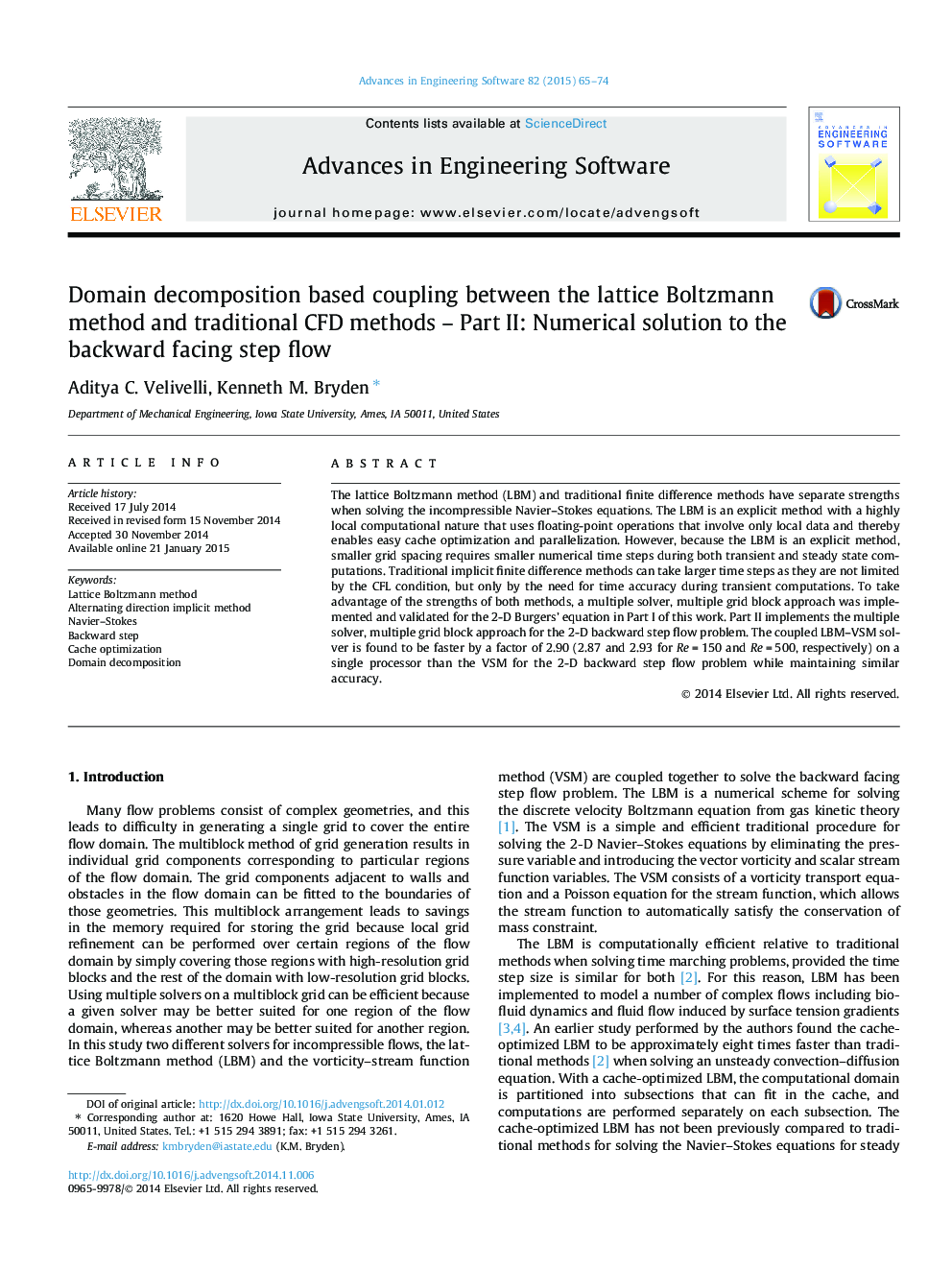| Article ID | Journal | Published Year | Pages | File Type |
|---|---|---|---|---|
| 569591 | Advances in Engineering Software | 2015 | 10 Pages |
•The cache-optimized lattice Boltzmann and finite difference methods are coupled.•The domain decomposition based coupling is implemented on multiblock grids.•Each individual solver is deployed in the region where it is most efficient.•The coupled solver is applied to flow over a backwards step.•The coupled solver was 2.9× faster than finite difference methods.
The lattice Boltzmann method (LBM) and traditional finite difference methods have separate strengths when solving the incompressible Navier–Stokes equations. The LBM is an explicit method with a highly local computational nature that uses floating-point operations that involve only local data and thereby enables easy cache optimization and parallelization. However, because the LBM is an explicit method, smaller grid spacing requires smaller numerical time steps during both transient and steady state computations. Traditional implicit finite difference methods can take larger time steps as they are not limited by the CFL condition, but only by the need for time accuracy during transient computations. To take advantage of the strengths of both methods, a multiple solver, multiple grid block approach was implemented and validated for the 2-D Burgers’ equation in Part I of this work. Part II implements the multiple solver, multiple grid block approach for the 2-D backward step flow problem. The coupled LBM–VSM solver is found to be faster by a factor of 2.90 (2.87 and 2.93 for Re = 150 and Re = 500, respectively) on a single processor than the VSM for the 2-D backward step flow problem while maintaining similar accuracy.
